Colin McCrate's Blog, page 11
April 27, 2018
Encyclopedia Botanica Podcast, Episode 87: Growing Citrus with Angela Judd

Photo courtesy of Angela Judd, Growing In The Garden
In this episode, Phoenix area based gardener, Angela Judd and Hilary will be discuss how to grow citrus.
HOW TO LISTEN:Subscribe in iTunes , Stitcher, or any of your favorite podcast players to have new episodes sent directly to your device.Listen right now in your browser by clicking above.SHOW NOTES:Citrus should be planted in a sunny, wind-protected area. Spring is the best time to plant container-grown plants.If you're growing in a region when citrus can live outdoors year round, you can also plant citrus year round. Standard-size grapefruit and orange trees can grow 18 to 22 feet tall, whereas dwarf varieties only grow 8 to 12 feet tall. Some smaller Like most fruit trees, citrus trees will usually be grafted. Buy trees from your local nursery to ensure that you end up with variety that is well suited for your growing region. When planted the tree from the pot you've purchased it in, be sure you don't bury the graft. Citrus prefer deep, infrequent watering. Fertilize your citrus plants 3-4 times per year. If you're growing in a container, you might fertilize more often, but use less fertilizer with each application.Below, left to right: Open citrus flower showing the stigma (large yellow central filament) and the stamen (smaller surrounding yellow filaments); Bees will do the pollinating when citrus fruit is grown outdoors.


Like what you hear? Please share our podcast with a friend. Subscribe on iTunes or your favorite podcast player so you never miss a beat. And we'd really appreciate you showing us some love by leaving a rating and review on iTunes.
Have a topic you'd like see us dig in to? Leave us a note in the comment section below or #EBpodcast on Instagram and Twitter!
We need your support to keep this podcast going! Any amount helps, so consider support us one of two ways:
Become an Encyclopedia Botanica Patreon
OR
Make a one-time contribution to the EB podcast

More about our Guest Expert:
Angela Judd is an avid vegetable, flower and fruit tree gardener in Mesa, Arizona. A mother of five children, she enjoys growing and preparing food from the garden for her family. She is a certified Master Gardener. She shares inspiration and tips to help home gardeners successfully grow their own garden on growinginthegarden.com.
Website: growinginthegarden.com
Instagram: @growing.in.the.garden
Facebook: @growinginthegardenaz

About the Host:
Hello, I’m Hilary Dahl. Outside of this podcast, my job is to help beginning and experienced growers create beautiful and productive gardens. I have the unique experience of working in on a wide range of projects, from small backyard garden plots to multi-acre vegetable farms. I also work in my own garden every day when I get home. This podcast is an opportunity to discuss seasonal garden topics and share the the joy of growing your own food.
April 20, 2018
Encyclopedia Botanica Podcast, Episode 86: Quinoa

In this episode Mark Macdonald of West Coast Seeds joins Hilary to discuss growing the grain quinoa. While many grains are impractical to grow in a home garden or smaller farm, the dense seed heads on quinoa plants provide high yields in compact spaces and provide a great option to those who might be interested in growing grains at home.
HOW TO LISTEN:Subscribe in iTunes , Stitcher, or any of your favorite podcast players to have new episodes sent directly to your device.Listen right now in your browser by clicking above.SHOW NOTES:Quinoa (Chenopodium quinoa), is an annual grain crop from the Andes Mountains. It's part of the plant family Amaranthaceae, and is related to the popular flower/grain crop Amaranth. Quinoa plants needs 100 days from seed to harvest. Optimal soil germination temperatures range from 18-24°C (65-75°F), and in that range seeds should germinate in 4-10 days.Plants can grow up to 6' tall and may require some staking. I'd recommend growing along a fence or in a block so that you can easily wrangle the plants with some stakes and twine. The varieties that are currently available as seed tend to be better adapted for milder growing climates, but the grain is grown all over the North America. Watch out for slug damage when the plants are young, but once your seedlings are established your quinoa crop should be relatively low maintenance. Late in the summer, the seed head on your quinoa plants should turn from green to the color of your finished crop. At this point, if you touch the seed heads and grains start to drop, you know your plants are ready to harvest. Harvest your grains while the weather is still warm and dry. Hang plants to dry for a few more weeks after harvest and then thresh the grain. Store threshed grain in an air-tight container such as a jar or ziplock bag. Rise grains before cooking, and enjoy!Check out West Coast Seeds stunning quinoa varieties here!
Like what you hear? Please share our podcast with a friend. Subscribe on iTunes or your favorite podcast player so you never miss a beat. And we'd really appreciate you showing us some love by leaving a rating and review on iTunes.
Have a topic you'd like see us dig in to? Leave us a note in the comment section below or #EBpodcast on Instagram and Twitter!
We need your support to keep this podcast going! Any amount helps, so consider support us one of two ways:
Become an Encyclopedia Botanica Patreon
OR
Make a one-time contribution to the EB podcast

More about our Guest Expert:
For the last ten seasons, Mark Macdonald has been growing, tasting, photographing, and writing about the ever-expanding selection at West Coast Seeds. Mark’s product descriptions, photos, and growing instructions are featured on the company’s seed packets, print catalogue, website, and Garden Wisdom blog. He is a passionate evangelist of sustainable organic growing systems, and promoter of biodiversity on small farms.
Website: https://www.westcoastseeds.com/
Instagram: @westcoastseeds
Facebook: @westcoastseeds

About the Host:
Hello, I’m Hilary Dahl. Outside of this podcast, my job is to help beginning and experienced growers create beautiful and productive gardens. I have the unique experience of working in on a wide range of projects, from small backyard garden plots to multi-acre vegetable farms. I also work in my own garden every day when I get home. This podcast is an opportunity to discuss seasonal garden topics and share the the joy of growing your own food.
April 13, 2018
Encyclopedia Botanica Podcast, Episode 85: April Slack Q+A with Colin McCrate

This Q+A Episode is all about seed starting! We answer questions about starting sweet potato slips, grow lights, and when to move your transplants outside.
HOW TO LISTEN:Subscribe in iTunes , Stitcher, or any of your favorite podcast players to have new episodes sent directly to your device.Listen right now in your browser by clicking above.SHOW NOTES:Coming later this afternoon...Books By Colin McCrate: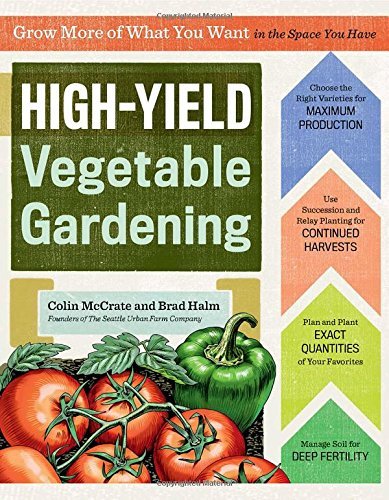
By Colin McCrate, Brad Halm
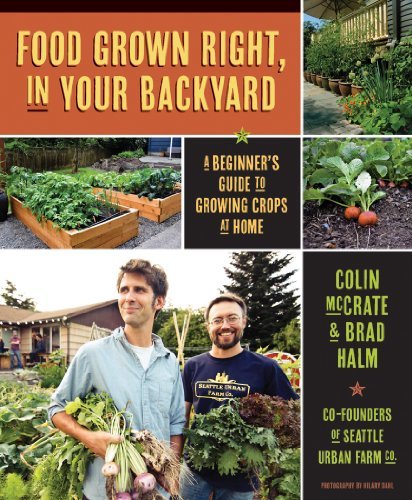
By Colin McCrate, Brad Halm
Like what you hear? Please share our podcast with a friend. Subscribe on iTunes or your favorite podcast player so you never miss a beat. And we'd really appreciate you showing us some love by leaving a rating and review on iTunes.
Have a topic you'd like see us dig in to? Leave us a note in the comment section below or #EBpodcast on Instagram and Twitter!
We need your support to keep this podcast going! Any amount helps, so consider support us one of two ways:
Become an Encyclopedia Botanica Patreon
OR
Make a one-time contribution to the EB podcast

More about this weeks guest expert:
Colin McCrate is the founder of the Seattle Urban Farm Co. He has been growing food organically for over 15 years and has designed and has managed projects ranging from multi-acre farms to small backyard gardens. The author of two books; Food Grown Right, In Your Backyard (Mountaineers Books, 2012) and The High-Yield Garden Planner (Storey Publishing, 2015); he believes that urban food production can help increase public awareness of environmental, health, and social issues.

About the Host:
Hello, I’m Hilary Dahl. Outside of this podcast, my job is to help beginning and experienced growers create beautiful and productive gardens. I have the unique experience of working in on a wide range of projects, from small backyard garden plots to multi-acre vegetable farms. I also work in my own garden every day when I get home. This podcast is an opportunity to discuss seasonal garden topics and share the the joy of growing your own food.
April 6, 2018
Encyclopedia Botanica Podcast, Episode 84: Seed Saving for the Home Gardener, Part 2

In this episode Hilary and Michela Colley continue their conversation on Seed Saving for the Home Gardener. This week they'll talk more about the practice of seed saving and share tips on how to best to utilize your space, timing your crops for seed saving, and the types of plants you might want to start with.
HOW TO LISTEN:Subscribe in iTunes , Stitcher, or any of your favorite podcast players to have new episodes sent directly to your device.Listen right now in your browser by clicking above.Foundational books on seed saving: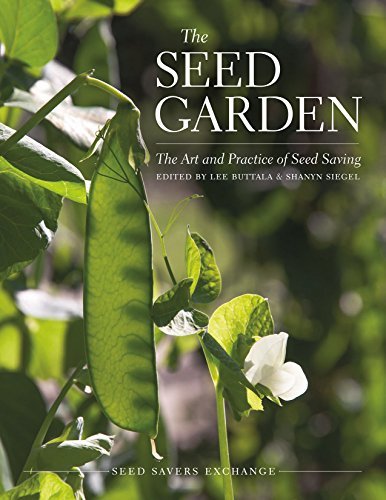
Seed Savers Exchange
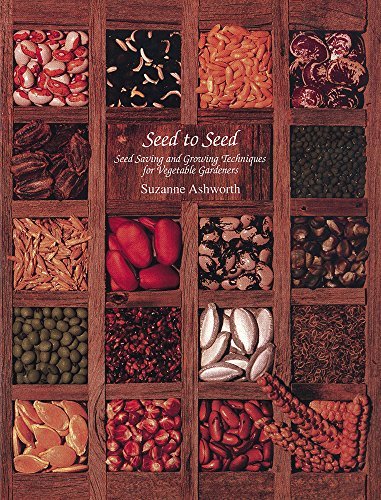
By Suzanne Ashworth
Like what you hear? Please share our podcast with a friend. Subscribe on iTunes or your favorite podcast player so you never miss a beat. And we'd really appreciate you showing us some love by leaving a rating and review on iTunes.
Have a topic you'd like see us dig in to? Leave us a note in the comment section below or #EBpodcast on Instagram and Twitter!
We need your support to keep this podcast going! Any amount helps, so consider support us one of two ways:
Become an Encyclopedia Botanica Patreon
OR
Make a one-time contribution to the EB podcast

More about this weeks guest expert:
Micaela Colley leads OSA’s research and education programs focused on organic seed production and organic plant breeding. She is the author of several publications. Micaela frequently teaches and speaks on organic seed topics and collaborates on research projects nationally. Micaela is also pursuing a PhD focused on organic and participatory plant breeding under Dr. Edith Lammerts van Bueren at Wageningen University in the Netherlands.
https://seedalliance.org/
Instagram: @organic_seed_alliance
Facebook: @organic.seed.alliance

About the Host:
Hello, I’m Hilary Dahl. Outside of this podcast, my job is to help beginning and experienced growers create beautiful and productive gardens. I have the unique experience of working in on a wide range of projects, from small backyard garden plots to multi-acre vegetable farms. I also work in my own garden every day when I get home. This podcast is an opportunity to discuss seasonal garden topics and share the the joy of growing your own food.
March 30, 2018
Encyclopedia Botanica Podcast, Episode 83: Seed Saving for the Home Gardener, Part 1

In this episode Hilary and guest expert Micaela Colley of the Organic Seed Alliance discuss terminology related to seed-saving, including: "open-pollinated", "heirloom" and "hybrid" seeds.
HOW TO LISTEN:Subscribe in iTunes , Stitcher, or any of your favorite podcast players to have new episodes sent directly to your device.Listen right now in your browser by clicking above.SHOW NOTES:What is the difference between "open sourced" seed and "patented seed"?Open sourced seed is protected from privatization, whereas patented and protected seeds cannot be saved, replanted, or shared by farmers and gardeners. For more on how you can support breeders growing open-sourced seed, visit: https://osseeds.org/"Open pollinated" seed:"Open pollinated" generally refers to seeds that are pollinated by insect, bird, wind, humans, or other natural mechanisms. Open-pollinated seeds will "breed true", meaning that when the plants of an open-pollinated variety self-pollinate, or are pollinated by another plant of the same variety, the resulting seeds will produce plants that are almost identical to their parents. There are no restrictions on the flow of pollen between plants, so open-pollinated plants tend to be more genetically diverse. This can cause a greater amount of variation within plant populations, which allows plants to slowly adapt to local growing conditions and climate year-to-year. When planning to grow out plants for seed, look for open pollinated (OP) varieties.Heirloom seeds:Heirloom seeds are seeds that have been saved by farmers and home gardeners for generations, generally 50 years or more. Heirlooms tend to be open pollinated, but open pollinated seeds aren't necessarily heirlooms. Hybrid seeds:Hybrid seeds are bread through a controlled method of pollination in which the pollen of two different species or varieties is crossed by human intervention. Hybridization can occur naturally through random crosses, but commercially available hybridized seed, often labeled as F1, are deliberately created to breed a desired trait. These hybridized seed varieties will usually not "breed true", meaning that their offspring will have different genetic traits than the parent plants, making hybrids less ideal for home seed saving. With that said, the seed saved from hybrids is still viable so you can still experiment with saving hybrid seeds. Foundational books on seed saving:
Seed Savers Exchange

By Suzanne Ashworth
Like what you hear? Please share our podcast with a friend. Subscribe on iTunes or your favorite podcast player so you never miss a beat. And we'd really appreciate you showing us some love by leaving a rating and review on iTunes.
Have a topic you'd like see us dig in to? Leave us a note in the comment section below or #EBpodcast on Instagram and Twitter!
We need your support to keep this podcast going! Any amount helps, so consider support us one of two ways:
Become an Encyclopedia Botanica Patreon
OR
Make a one-time contribution to the EB podcast

More about this weeks guest expert:
Micaela Colley leads OSA’s research and education programs focused on organic seed production and organic plant breeding. She is the author of several publications. Micaela frequently teaches and speaks on organic seed topics and collaborates on research projects nationally. Micaela is also pursuing a PhD focused on organic and participatory plant breeding under Dr. Edith Lammerts van Bueren at Wageningen University in the Netherlands.
https://seedalliance.org/
Instagram: @organic_seed_alliance
Facebook: @organic.seed.alliance

About the Host:
Hello, I’m Hilary Dahl. Outside of this podcast, my job is to help beginning and experienced growers create beautiful and productive gardens. I have the unique experience of working in on a wide range of projects, from small backyard garden plots to multi-acre vegetable farms. I also work in my own garden every day when I get home. This podcast is an opportunity to discuss seasonal garden topics and share the the joy of growing your own food.
March 16, 2018
Encyclopedia Botanica Podcast, Episode 82: Pollinator Gardens with Justin Wheeler

In this episode, Hilary and guest expert Justin Wheeler of the Xerces Society will be talking about how to create an effective pollinator habitat in your garden by choosing cultivars that support beneficial insects.
HOW TO LISTEN:Subscribe in iTunes , Stitcher, or any of your favorite podcast players to have new episodes sent directly to your device.Listen right now in your browser by clicking above.SHOW NOTES:What is the Xerces Society?Xerces Society is invertebrate conservation organization - so they work to promote the conservation of animals like bees, butterflies, freshwater mussels, and insects. Broadly their work is focused on restoring habitat for these animals, protecting endangered species, and making science based recommendations regarding pesticides, land use, and other factors that impact the health of invertebrates. In addition to advocacy and policy work, the Xerces staff is actively conducting research and also creating real-world habitat across the countryWha's the difference between pollinators and beneficial insects? There's a lot of overlap. In general, pollinators would mainly encompass bees and butterflies as insect pollinators, and "beneficial insect" may be used as a catch-all which would include beetles, wasps, flies and other insects that are seen as predatory as their first "job" and may be seen as pollinators second. The reality is that quality habitat should be supporting all of these insects - both pollinators and beneficials. If you're a gardener however, you may be more interested in attracting butterflies - and plant selections should reflect that. If you are a farmer and are interested in increasing pumpkin pollination for example, or building up populations of beneficial predators to support crop pests you'll want to tweak your habitat design in favor of those strategiesWhy is it's important to for the home gardener or market farmer to incorporate pollinator habitat into their planting plans?There's been a lot of research in recent years showing that pollinator populations are actually doing better in some ways in urban and suburban landscapes where they are largely protected from monocultures and pesticide use found on ag lands - so homeowners and gardeners are actually really well positioned to make a sizeable impact in promoting pollinators. For farmers the benefits are really clear - more pollinators mean higher yields and higher quality fruit set. Using insects as pest control can further this benefit by not only improving pollination but by acting as a first line of defense against crop pests. What does the term cultivar mean?The term cultivar is thrown around in the trade to mean any plant that's been bred for a specific characteristic. Some "cultivars" are really just "selections" - by that I mean someone found a phlox growing in the wild that's highly resistant to powdery mildew, so they bred that one plant out into the cultivar called 'Jeana'. The phlox is not really very different than the straight species in terms of its ability to support wildlife - it's just a selection from the straight species that happens to have good disease resistance. Another similar example is Rudbeckia 'Goldsturm'. It's been the most widely bred cultivar of black-eyed susan for decades. Almost any black-eyed susan you find in a nursery is going to be this cultivar. It was bred for shorter stems and for its habit of heavy flowering - but it came from a plant naturally showing these traits in nature.How is a cultivar different than a hybrid?When plants have been hybridized, they are bred to change their bloom or foliage color. Any plant that has been hybridized is going to be sterile, which means its not going to have pollen, and may have reduced nectar available. Some of my favorite cultivars of redbud are completely sterile - which make them useless for supporting pollinators. Lots of echinacea varieties have been bred to change the color of their bloom - which means they may actually flower in colors that pollinators can't see or are less attracted to. Lots of echinacea has also been bred to exhibit double-blooms or more complex flower shapes that pollinators can't even get into.Not all plant cultivars are created equal when it comes to choosing the right plants for your pollinator garden. Why are some cultivars effective in creating habitat for beneficial insects, while others don't?I want to be clear that I'm not saying cultivars are universally bad - but if your primary goal is to provide the best quality plants for pollinators, sticking to straight species or finding cultivars that are as close to the original as possible should be the goal. That said, I'm a realist, and I know that you're generally only going to find straight species native plants at nurseries that specifically specialize in them. I would just caution folks that if they see someting at Lowes or Home Depot tagged "pollinator friendly" - that doesn't mean it truly is, and they may need to do a little research to find out what it was bred for.Below: Honey bee on flowering cilantro

Books by Xerces Society:
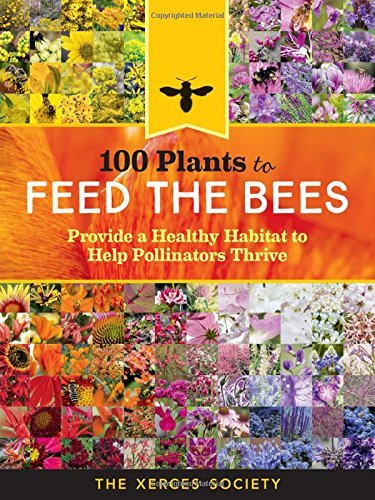
By The Xerces Society
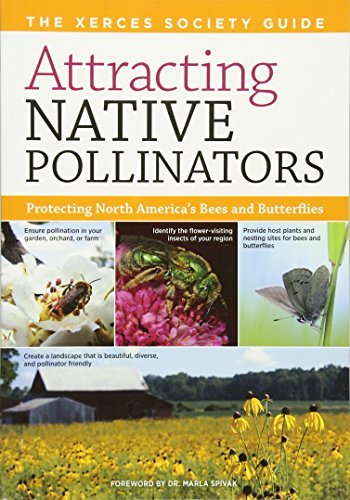
By The Xerces Society
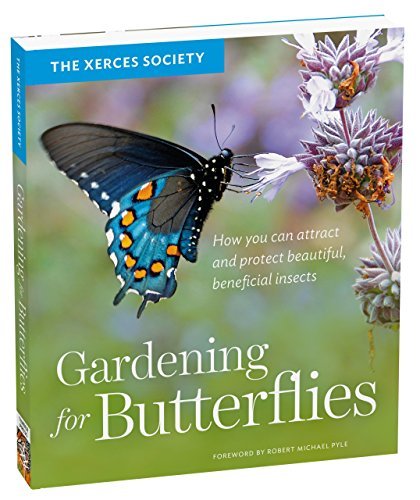
By The Xerces Society
Related articles:
Like what you hear? Please share our podcast with a friend. Subscribe on iTunes or your favorite podcast player so you never miss a beat. And we'd really appreciate you showing us some love by leaving a rating and review on iTunes.
Have a topic you'd like see us dig in to? Leave us a note in the comment section below or #EBpodcast on Instagram and Twitter!
We need your support to keep this podcast going! Any amount helps, so consider support us one of two ways:
Become an Encyclopedia Botanica Patreon
OR
Make a one-time contribution to the EB podcast

More about this weeks guest expert:
Justin Wheeler is a Web and Communications Specialist at Xerces Society. He's also an expert gardener and pollinator enthusiast who is particularly well-versed in the types of plants and flowers that are most beneficial to pollinators.
https://xerces.org/
Instagram: @xercessociety
Facebook: @xercessociety

About the Host:
Hello, I’m Hilary Dahl. Outside of this podcast, my job is to help beginning and experienced growers create beautiful and productive gardens. I have the unique experience of working in on a wide range of projects, from small backyard garden plots to multi-acre vegetable farms. I also work in my own garden every day when I get home. This podcast is an opportunity to discuss seasonal garden topics and share the the joy of growing your own food.
March 9, 2018
Encyclopedia Botanica Podcast, Episode 81: Asparagus with Alley Swiss

This week Hilary is joined by Alley Swiss, the owner of Filaree Garlic Farm. Filaree Farm, which is know for their premium quality garlic seed, has been expanding their offerings to include several new seed products such as shallot sets, seed potatoes, sweet potato plants, and the newest addition, asparagus crowns. This episode is all about asparagus (well..maybe they discuss garlic a LITTLE), so tune in to learn about how to plant, grow and care for this low-maintenance perennial.
HOW TO LISTEN:Subscribe in iTunes , Stitcher, or any of your favorite podcast players to have new episodes sent directly to your device.Listen right now in your browser by clicking above.SHOW NOTES:In this episode, we discuss:
How asparagus plants growHow and when to plant asparagusSelecting a site for your asparagus plantsHarvesting and fertilizationImportant Take-aways:
When is the best time to plant asparagus crowns?Asparagus can be planted up to 6 weeks before your last frost date, but anytime in the spring is fine!In what type of growing conditions does asparagus thrive?Asparagus need full sun, well drained soil, and a well prepared dedicated space!How do I plant asparagus crowns?Dig a 8 in. deep trench, spread out roots of the crown on the bottom of the trench. Space each crown 18 in. apart. Cover with 3-4 in. of garden soil and continue to fill in with soil every two weeks, like you would with potatoes, until the trench is full. Should I fertilize my asparagus? Fertilize asparagus plants after you've finished harvesting for the season. The added nutrients will feed the flowering fronds and encourage them to thrive, photosynthesis, and replenish the energy stored in the underground rhizomes.Left to right: Asparagus crowns, harvestable asparagus, asparagus fronds.



1st year asparagus in a 18 in. deep wood-framed raised bed.

For more on growing perennial edibles:

By Colin McCrate, Brad Halm

By Colin McCrate, Brad Halm
Like what you hear? Please share our podcast with a friend. Subscribe on iTunes or your favorite podcast player so you never miss a beat. And we'd really appreciate you showing us some love by leaving a rating and review on iTunes.
Have a topic you'd like see us dig in to? Leave us a note in the comment section below or #EBpodcast on Instagram and Twitter!
We need your support to keep this podcast going! Any amount helps, so consider support us one of two ways:
Become an Encyclopedia Botanica Patreon
OR
Make a one-time contribution to the EB podcast
More about this weeks guest expert:
Alley Swiss is the owner of Filaree Garlic Farm, an independently owned grower and supplier of premium quality garlic seed for 30 years. As keepers of the largest privately held collection of garlic in North America, Filaree Farm's mission is to preserve and provide others with the opportunity to grow their more than 100 strains of garlic- collected from throughout the world. In recent years they have added several new seed products including shallot sets, seed potatoes, sweet potato plants, and the newest addition, asparagus crowns.
https://www.filareefarm.com/
Instagram: @filareegarlicfarm
Facebook: @filareegarlicfarm

About the Host:
Hello, I’m Hilary Dahl. Outside of this podcast, my job is to help beginning and experienced growers create beautiful and productive gardens. I have the unique experience of working in on a wide range of projects, from small backyard garden plots to multi-acre vegetable farms. I also work in my own garden every day when I get home. This podcast is an opportunity to discuss seasonal garden topics and share the the joy of growing your own food.
March 2, 2018
Encyclopedia Botanica Podcast, Episode 80: March Slack Q+A with Colin McCrate

You don't have to spend a fortune on dahlia tubers. This beauty, Miss Delilah from Swan Island, was $6.95!
This week we're bring back the Slack Q+A episodes. The questions that make up the content for these episodes are pulled from our online Slack group, which is an online community where you can share questions and gardening tips with me and an awesome group of edible gardeners. Listeners who support this podcast for $5/month or more receive access to the Slack forum and, just as importantly, help make this podcast possible! For these Q+ A episodes I will be joined by guest expert, Colin McCrate.
HOW TO LISTEN:Subscribe in iTunes , Stitcher, or any of your favorite podcast players to have new episodes sent directly to your device.Listen right now in your browser by clicking above.SHOW NOTES:In this episode, we discuss:
Crop planningStarting peas from seedGrowing fruit trees in containersBuying dahlia tubersStrawberry plant spacingImportant Take-aways:
Can I plant beans in the space where I was growing my peas after I pull them? Depending on where you're growing, it might be too late for pole beans. Bush beans should defintely work! Fall brassicas and root vegetables are usually a good choice too. Is early March too late to start peas indoors in the PNW? Not at all! Starting peas indoors will speed up the germination process and allow you to plant your transplants out into the garden earlier. Just remember that it can be hard to provide enough light for peas to thrive indoors, so we recommend moving your seedlings outside after the seeds have germinated.Can dahlia really cost $25 for one tuber?Dahlia tuber can be pricey, and yes, some can cost $25/tuber, but in theory you'll invest in them once and then have the same tuber stock for many years to come. The tubers multiply each year, so you can expand your garden each year and even give the extras away to friends. I've found many great dahlia varieties that are in the $5-$10 range (see the above photo of the $6.95 Miss Delilah from Swan Island Dahlias). My advice would be to start small and order 3-5 varieties, then you can expand your dahlia garden each year as the tubers multiply!How far apart should I space strawberries in a container? You can space your mother strawberry plants anywhere from 4-12 inches apart, and the plants should be thinned to 4-6 inches apart each year. The mother plants will send out runners with new baby plants pretty quickly after planting, and those babies will fill out the space in between your mother plants. If you want your container to looked more filled out right from the start, you can plant your mothers closer together, but it's important that you thin the plants to allow for air circulation. Alternatively, if you wanted to spend less on mother plants, you can space the plants 12 inches apart and allow them to fill out the space.Left to right: Strawberries spaced at 12 inches apart fill out a bed within one year of planting and pea seedlings transplanted into the garden.


Come of Hilary's favorite dahlias for under $10 per tuber: (Left to right) Cornell, Crichton Honey, Copper Blaine, Intrigue, Ginger Willow





Books by Colin:

By Colin McCrate, Brad Halm

By Colin McCrate, Brad Halm
Like what you hear? Please share our podcast with a friend. Subscribe on iTunes or your favorite podcast player so you never miss a beat. And we'd really appreciate you showing us some love by leaving a rating and review on iTunes.
Have a topic you'd like see us dig in to? Leave us a note in the comment section below or #EBpodcast on Instagram and Twitter!
We need your support to keep this podcast going! Any amount helps, so consider support us one of two ways:
Become an Encyclopedia Botanica Patreon
OR
Make a one-time contribution to the EB podcast

More about this weeks guest expert:
Colin McCrate is the founder of the Seattle Urban Farm Co. He has been growing food organically for over 15 years and has designed and has managed projects ranging from multi-acre farms to small backyard gardens. The author of two books; Food Grown Right, In Your Backyard (Mountaineers Books, 2012) and The High-Yield Garden Planner (Storey Publishing, 2015); he believes that urban food production can help increase public awareness of environmental, health, and social issues.

About the Host:
Hello, I’m Hilary Dahl. Outside of this podcast, my job is to help beginning and experienced growers create beautiful and productive gardens. I have the unique experience of working in on a wide range of projects, from small backyard garden plots to multi-acre vegetable farms. I also work in my own garden every day when I get home. This podcast is an opportunity to discuss seasonal garden topics and share the the joy of growing your own food.
February 23, 2018
Encyclopedia Botanica Podcast, Episode 79: Sweet Peas with Simon Crawford

In this episode Hilary and guest expert Simon Crawford, of Owls Acre Seed, discuss just about everything you need to know to grow gorgeous sweet peas!
HOW TO LISTEN:Subscribe in iTunes , Stitcher, or any of your favorite podcast players to have new episodes sent directly to your device.Listen right now in your browser by clicking above.SHOW NOTES:In this episode, we discuss:
Sweet pea varietiesIdeal growing conditionsPinching Plant spacingFertilizationSeed savingImportant Take-aways:
Sweet peas are originally from the Mediterranean, so they thrive in mild, dry conditions. Sweet peas varieties are generally organized into the following categories:Spencers (types shown in photos): Long stems, great for cut flowersHeirlooms: Heavily scentedEarly flowering: Best types for growing in warmer climatesDwarf: Well suited for containers and hanging basketsMost sweet pea plants require trellising! Bamboo tri-pod trellises work well, or you can plant along a fence, wall, or pea net. Not matter how you trellis, you'll need to tie your sweet peas just as you do with your edible peas.Pinching sweet pea seedlings at the 3rd leaf node from the base of the plant will help encourage branching. This will result in more blooms, but they may have shorter stems than the non-pinched plant.Bud drop occurs when plants are too wet or growing in low light conditions.Soap sprays, like Safers, will help keep aphids off of sweet peas.


Check out the following blogs and podcast episodes for more on growing flowers:Our favorite books on growing flowers:
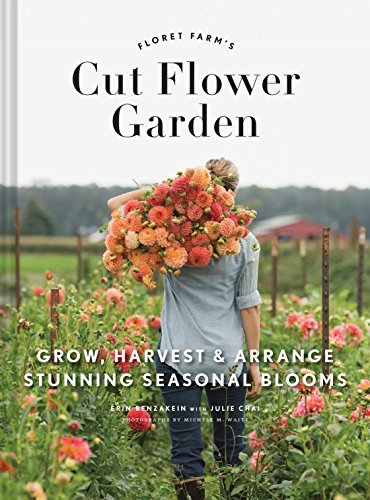
Floret Farm's Cut Flower Garden: Grow, Harvest, and Arrange Stunning Seasonal Blooms
By Erin Benzakein, Julie Chai

The Flower Farmer: An Organic Grower's Guide to Raising and Selling Cut Flowers, 2nd Edition
By Lynn Byczynski
Like what you hear? Please share our podcast with a friend. Subscribe on iTunes or your favorite podcast player so you never miss a beat. And we'd really appreciate you showing us some love by leaving a rating and review on iTunes.
Have a topic you'd like see us dig in to? Leave us a note in the comment section below or #EBpodcast on Instagram and Twitter!
We need your support to keep this podcast going! Any amount helps, so consider support us one of two ways:
Become an Encyclopedia Botanica Patreon
OR
Make a one-time contribution to the EB podcast
Guest Expert Feature:
Simon Crawford
Simon is a plant breeder and seedsman that has been particularly interested in sweet peas for many years. He passed that interest on to his daughter, Elizabeth who now owns and runs Owls Acre Seed. Owls Acre Seed is a UK based seed house based that specializes in sweet pea seed.
http://www.owlsacreseeds.co.uk/

About the Host:
Hello, I’m Hilary Dahl. Outside of this podcast, my job is to help beginning and experienced growers create beautiful and productive gardens. I have the unique experience of working in on a wide range of projects, from small backyard garden plots to multi-acre vegetable farms. I also work in my own garden every day when I get home. This podcast is an opportunity to discuss seasonal garden topics and share the the joy of growing your own food.
February 16, 2018
Encyclopedia Botanica Podcast, Episode 78: Veggie Garden Remix with Niki Jabbour

In this episode Hilary and guest expert Niki Jabbour discuss some of the unusual vegetable crops featured in Niki's new book, Veggie Garden Remix! If you're looking to add some variety to your garden this year or you've found yourself frustrated with some of the more traditional vegetable crops, this episode is packed with inspiration.
HOW TO LISTEN:Subscribe in iTunes , Stitcher, or any of your favorite podcast players to have new episodes sent directly to your device.Listen right now in your browser by clicking above.SHOW NOTES:In this episode, we discuss:
Fun and unusual plants that you can grow to add variety to your annual vegetable garden
Important Take-aways:
Experimenting with unusual and exotic crops can be a way to diversify your garden, extend your growing season, and find substitutes for crops that you might find difficult or frustrating to grow. Crops discussed in this episode include:Snake gourdSugar Magnolia snow peasYard long beans: start indoors if you're growing in climate with a shorter, milder seasonAmaranthMagenta spreenBurr gherkinsGround cherries Hosta shootsMexican sour gherkinsLeft to right: Garden peas, Snake gourd, Amaranth, Magenta spreen. The following photos are from Niki's new book, Veggie Garden Remix.




Books by Niki:
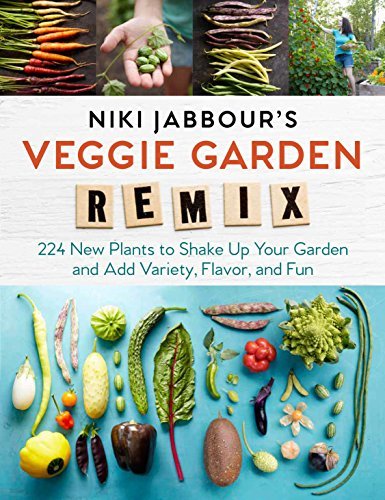
By Niki Jabbour

By Niki Jabbour

By Niki Jabbour
Like what you hear? Please share our podcast with a friend. Subscribe on iTunes or your favorite podcast player so you never miss a beat. And we'd really appreciate you showing us some love by leaving a rating and review on iTunes.
Have a topic you'd like see us dig in to? Leave us a note in the comment section below or #EBpodcast on Instagram and Twitter!
We need your support to keep this podcast going! Any amount helps, so consider support us one of two ways:
Become an Encyclopedia Botanica Patreon
OR
Make a one-time contribution to the EB podcast
Guest Expert Feature:

Niki Jabbour
Niki Jabbour is the award-winning author of Niki Jabbour’s Veggie Garden Remix, The Year-Round Vegetable Gardener, and Groundbreaking Food Gardens.
Her work is found in Fine Gardening, Garden Making, Birds & Blooms, Horticulture, and other publications, and she speaks widely on food gardening at events and shows across North America.
She is the host and creator of The Weekend Gardener radio show.
She lives in Halifax, Nova Scotia.
http://www.nikijabbour.com/
SavvyGardening.com
Instagram: @nikijabbour

About the Host:
Hello, I’m Hilary Dahl. Outside of this podcast, my job is to help beginning and experienced growers create beautiful and productive gardens. I have the unique experience of working in on a wide range of projects, from small backyard garden plots to multi-acre vegetable farms. I also work in my own garden every day when I get home. This podcast is an opportunity to discuss seasonal garden topics and share the the joy of growing your own food.



